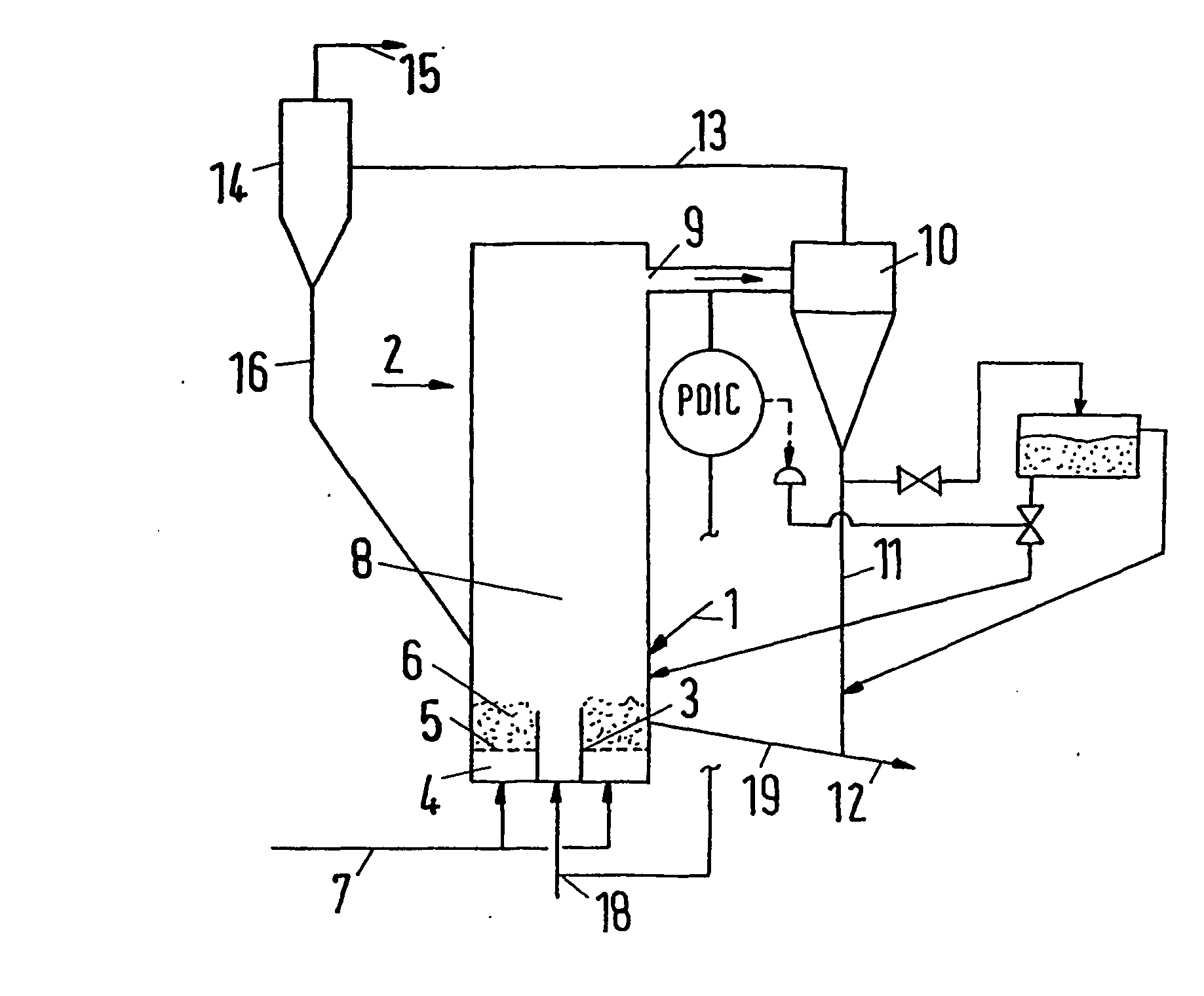Method and plant for producing low-temperature coke
a low-temperature coke and coke technology, applied in the direction of thermal non-catalytic cracking, special form destructive distillation, lighting and heating apparatus, etc., can solve the problems of dust-laden exhaust gas, e.g. from product cooling, unable to be integrated in the process, and restricted in terms of retention time, so as to achieve good energy utilization and perform more efficiently
- Summary
- Abstract
- Description
- Claims
- Application Information
AI Technical Summary
Benefits of technology
Problems solved by technology
Method used
Image
Examples
example 1
Low-Temperature Carbonization without Addition of Ore
[0046] In a plant corresponding to FIG. 1, 128 t / h coal with a grain size of less than 10 mm with 25.4 wt-% volatile components and 16 wt-% moisture was supplied to the low-temperature carbonization reactor 2 via conduit 1.
[0047] Through conduits 18 and 7, 68,000 Nm3 / h air were introduced into the reactor 2, which air was distributed over conduit 18 and conduit 7 (fluidizing gas) in a ratio of 0.74:0.26. The temperature in the low-temperature carbonization reactor 2 was 900° C.
[0048] From the reactor 2, 64 t / h low-temperature coke were withdrawn via conduit 12, which coke consisted of 88 wt-% char and 12 wt-% ash. Furthermore, 157,000 Nm3 / h process gas with a temperature of 900° C. were withdrawn via conduit 15, which process gas had the following composition:
11vol-% CO10vol-% CO224vol-% H2O20vol-% H21vol-% CH434vol-% N2.
example 2
Low-Temperature Carbonization with Preheating of Ore
[0049] In a plant corresponding to FIG. 3, 170 t / h iron ore were supplied to the suspension heat exchanger 20 via conduit 21 and upon separating gas in the cyclone 14 charged into the low-temperature carbonization reactor 2 via conduit 16. Furthermore, 170 t / h granular coal with 25.4 wt-% volatile constituents and 17 wt-% moisture were supplied to the reactor 2 via conduit 1.
[0050] Via conduits 18 and 7, 114,000 Nm3 / h air were introduced into the reactor 2, which air was distributed over conduits 18 and 7 (fluidizing gas) in a ratio of 0.97:0.03. The temperature in the low-temperature carbonization reactor 12 was adjusted to 950° C.
[0051] From the reactor 2, 210 t / h of a mixture of low-temperature coke and iron ore were withdrawn via conduit 2, which mixture consisted of
16wt-% Fe2O349wt-% FeO28wt-% char, and7wt-% ash.
[0052] Furthermore, 225,000 Nm3 / h process gas with a temperature of 518° C. were withdrawn from the plant via c...
PUM
| Property | Measurement | Unit |
|---|---|---|
| temperature | aaaaa | aaaaa |
| grain size | aaaaa | aaaaa |
| pressure | aaaaa | aaaaa |
Abstract
Description
Claims
Application Information
 Login to View More
Login to View More - R&D
- Intellectual Property
- Life Sciences
- Materials
- Tech Scout
- Unparalleled Data Quality
- Higher Quality Content
- 60% Fewer Hallucinations
Browse by: Latest US Patents, China's latest patents, Technical Efficacy Thesaurus, Application Domain, Technology Topic, Popular Technical Reports.
© 2025 PatSnap. All rights reserved.Legal|Privacy policy|Modern Slavery Act Transparency Statement|Sitemap|About US| Contact US: help@patsnap.com



